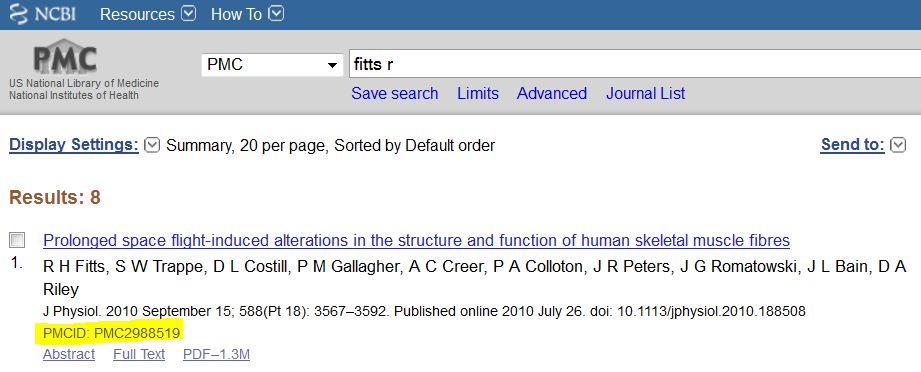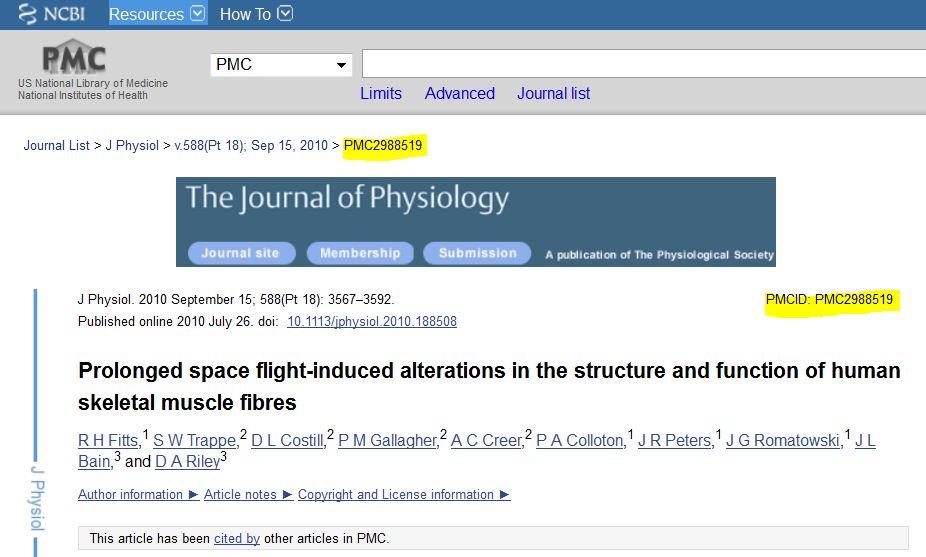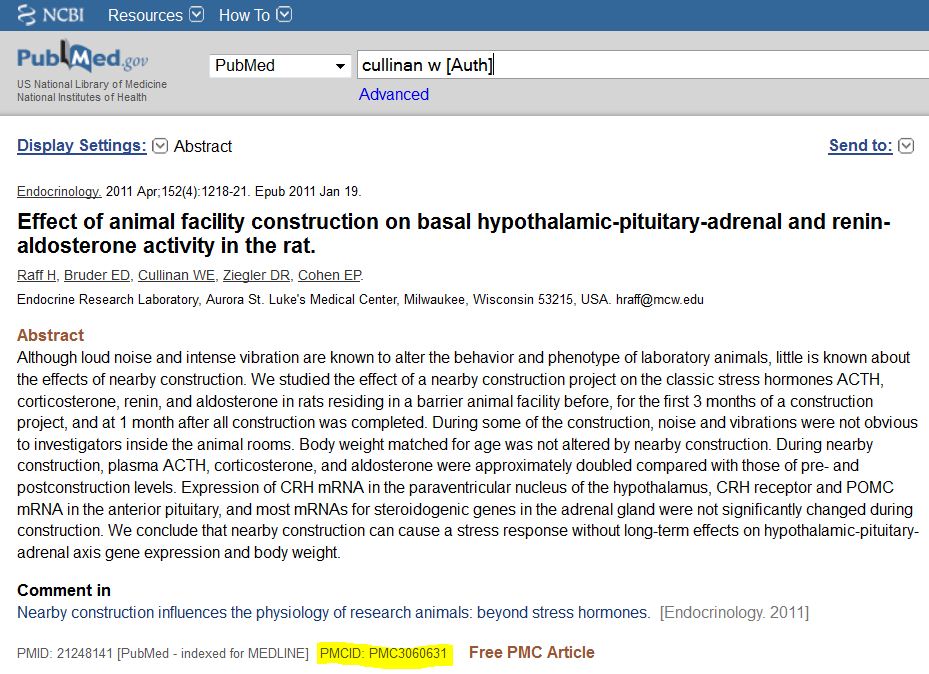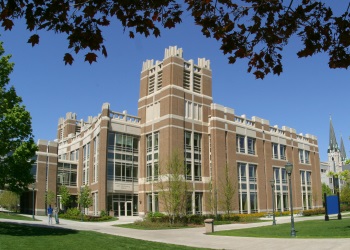NIH Public Access - Compliance
How to Comply | Compliance Tool for eRA Commons Users | What is a PMCID?
How to Find the PMCID | PMID: PMCID Converter | Non-Compliance Consequences
How to comply:
- Ensure that your copyright transfer agreement allows for submission to NIH's PMC (formerly PubMed Central [More info]
- Have your paper submitted to NIH through the NIH Manuscript Submission system either by you, by a third-party, or by the publisher. [More info]
- Use the PMC unique article number (PMCID) when citing papers that fall under the policy and that you authored or arose from your grant in NIH applications, proposals, or progress reports. See below for more on PMCID.
FOR eRA COMMONS USERS: AWARDS VIEW IN MY BIBLIOGRAPHY IN MY NCBI
Link your eRA Commons account with your my NCBI account and take advantage of the new Awards View in My Bibliography to manage compliance. Details can be found in the relevant section of the My NCBI Help manual.
What is a PMCID?
The PMC ID is a unique number assigned to each PubMed Central record. It's like a bar code, with no intrinsic meaning. In communications with the NIH, include it when citing your own papers, or papers arising from your grant.
List the PMC reference number (PMCID) at the end of the full journal citation for an article.
Examples:
- Varmus H, Klausner R, Zerhouni E, Acharya T, Daar A, Singer P. (2003) Public Health: Grand
Challenges in Global Health. Science 302(5644), 398–399. PMCID: 243493 - Zerhouni, EA. (2003) A New Vision for the National Institutes of Health. Journal of Biomedicine and
Biotechnology (3), 159–160. PMCID: 400215
See the NIH site for more on Citation Methods.
How to find the PMCID
In PMC (formerly PubMed Central):
1. The PMCID is beneath each citation in the results list:
2.The PMCID is visible in two places near the top of each article:
In PubMed:
NOTE: The PMCID is visible in the Abstract and MEDLINE display formats. It is not shown in the default Summary format. Remember that most PubMed records are not in PMC and so will not have PMCIDs.
PMID : PMCID Converter (for when you have one and need the other)
If you know the PubMed ID (PMID), which is the identifying number of the citation in PubMed, you can convert it to the corresponding PMCID without searching PMC. You can also convert from the PMCID to the PMID.
Consequences of Non-Compliance
- Compliance with this Policy is a statutory requirement and a term and condition of the grant award and cooperative agreement, in accordance with the NIH Grants Policy Statement. Failure to comply violates the statute as well as the PI's agreement with the NIH.
- Compliance with the NIH Public Access Policy is not a factor in the evaluation of grant applications. Non-compliance will be addressed administratively, and may delay or prevent awarding of funds







